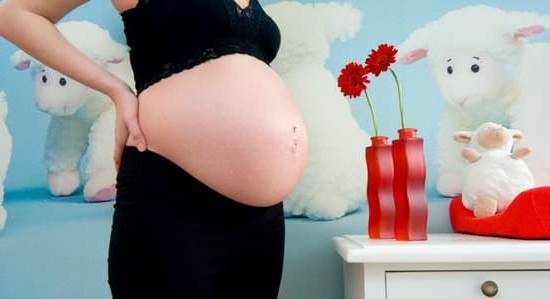If you are trying to conceive, you may have heard that fenugreek can help. Fenugreek is an herb that has been used for centuries to treat a variety of conditions. It is available in capsule, tea, and extract form.
Fenugreek is purported to help increase fertility in both men and women. In men, it is thought to improve sperm count and motility. In women, fenugreek is thought to help with ovulation and increase the chance of conception.
There is some scientific evidence to support the use of fenugreek for fertility. A study published in the journal Phytotherapy Research found that fenugreek supplementation improved sperm count and motility in men. A study published in the journal Complementary Therapies in Clinical Practice found that fenugreek helped improve ovulation in women.
If you are trying to conceive, you may want to consider using fenugreek. Talk to your healthcare provider before starting any supplement, however, to make sure it is safe for you.
Printable Fertility Chart
There are a few different ways to track your fertility, but one of the most popular methods is to use a fertility chart. A fertility chart is a graph that tracks your menstrual cycle and your basal body temperature (BBT). This helps you to see patterns in your menstrual cycle and determine when you are most and least fertile.
To create a fertility chart, you will need to track your menstrual cycle and BBT for several months. The first step is to calculate the length of your menstrual cycle. To do this, count the number of days from the first day of your period to the day before your next period. This is your menstrual cycle length.
The next step is to track your basal body temperature. To do this, you will need a basal body thermometer. This is a special thermometer that measures your basal body temperature. You will need to take your temperature every morning before you get out of bed. Write down your temperature each morning on your fertility chart.
After you have tracked your menstrual cycle and BBT for a few months, you will be able to see patterns in your chart. You will be able to see when you are most and least fertile. You can also use your fertility chart to predict when you will ovulate.
If you are trying to conceive, you can use your fertility chart to help you determine when you are most fertile. You can also use your chart to help you track your ovulation. If you are not trying to conceive, you can use your fertility chart to help you avoid getting pregnant.
There are a few things to keep in mind when using a fertility chart. First, your chart may not be accurate if you have irregular periods. Second, your basal body temperature may not be accurate if you have a fever or if you are taking medication that affects your temperature. Third, you may not be able to predict ovulation accurately if you have an irregular cycle.
If you are trying to conceive, you may want to consult with your doctor to get more accurate information about your fertility.
Best Fertility Drugs To Get Pregnant
There are many fertility drugs on the market, but not all of them are created equal. Some drugs are more effective than others, and some have more side effects than others. Here is a list of the best fertility drugs to get pregnant.
Clomid. Clomid is one of the most popular fertility drugs on the market. It is very effective at inducing ovulation, and it has very few side effects.
Femara. Femara is also very effective at inducing ovulation. It is a little more expensive than Clomid, but it has a higher success rate.
Gonal-F. Gonal-F is a fertility drug that is used to stimulate ovulation. It is very effective, and it has few side effects.
Progesterone. Progesterone is a hormone that is necessary for pregnancy. It can be taken as a pill, or it can be injected. Progesterone is very effective at preventing miscarriage.
HCG. HCG is a hormone that is produced during pregnancy. It can be taken as a pill, or it can be injected. HCG is very effective at inducing ovulation.
Tracking Fertility With Pcos
Polycystic ovarian syndrome, or PCOS, is a hormonal disorder that affects women of reproductive age. It is the most common endocrine disorder in women and is characterized by the presence of polycystic ovaries on ultrasound. PCOS can cause infertility, menstrual irregularities, and hirsutism (excessive hair growth).
There is no one test to diagnose PCOS, but a combination of tests can help to confirm the diagnosis. A blood test can measure the levels of hormones associated with PCOS, such as testosterone and insulin. An ultrasound can also be used to look for polycystic ovaries.
If you are experiencing symptoms of PCOS, it is important to see your doctor for diagnosis and treatment. Treatment for PCOS varies depending on the individual, but may include medications to help regulate hormone levels and improve fertility, as well as lifestyle modifications such as diet and exercise.
Fertility After Depo
-Provera
Depo-Provera is a synthetic form of progesterone that is injected every three months to help prevent pregnancy. It is also used to treat endometriosis, a condition in which tissue that normally lines the inside of the uterus grows outside the uterus.
Depo-Provera has been used as a contraceptive for more than 40 years and is considered very effective. However, it is not without its drawbacks. One of the most common complaints from women who use Depo-Provera is that it can be difficult to get pregnant after stopping the injections.
The reason for this is not fully understood, but it is thought that the Depo-Provera may affect the ovaries in some way, making it more difficult for them to release eggs. Additionally, the hormone may also affect the lining of the uterus, making it less hospitable for a fertilized egg to implant.
If you are considering using Depo-Provera, it is important to be aware of these potential fertility issues. If you are planning to stop using the injections and want to become pregnant, you may need to wait several months before trying to conceive.

Welcome to my fertility blog. This is a space where I will be sharing my experiences as I navigate through the world of fertility treatments, as well as provide information and resources about fertility and pregnancy.





